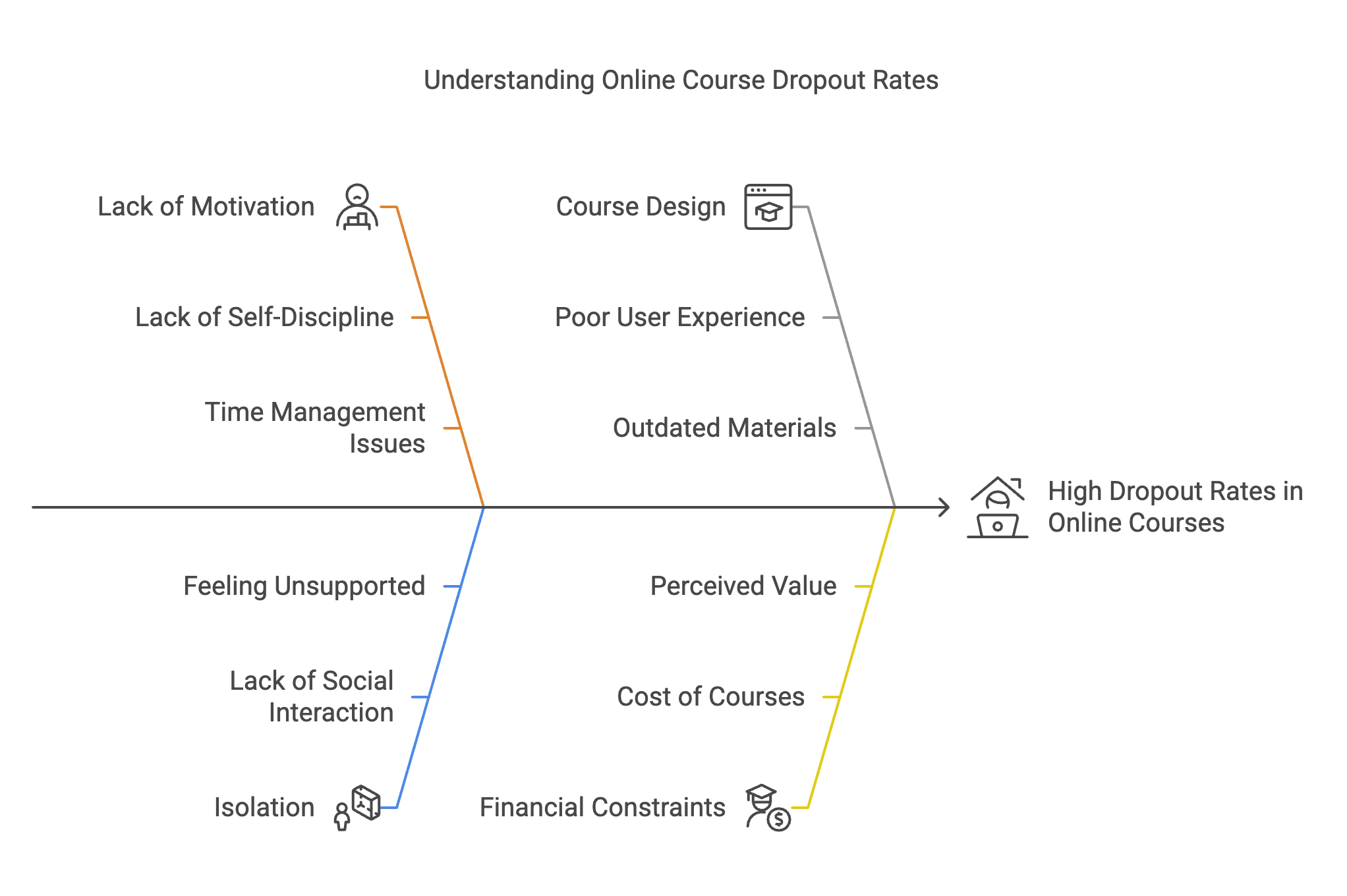Online education has transformed the way people learn, offering flexibility, accessibility, and diverse course options. However, despite these advantages, online courses often suffer from high dropout rates. Understanding why learners disengage and implementing strategies to keep them motivated can significantly improve course completion rates.

Why Learners Drop Out of Online Courses
- Lack of Motivation and Self-Discipline
Online learning requires a high level of self-discipline. Without direct supervision, many students struggle to stay motivated and complete their coursework. - Feeling Isolated
Unlike traditional classrooms, online courses can lack social interaction, making students feel disconnected and unsupported. - Poor Course Design and User Experience
A confusing interface, outdated materials, or lack of interactive content can frustrate learners and lead to disengagement. - Time Management Issues
Many online learners are working professionals or have other responsibilities, making it difficult to manage their time effectively. - Lack of Immediate Feedback
Slow responses from instructors or the absence of real-time feedback can make learners feel unsupported and unsure of their progress. - Technical Difficulties
Problems with accessing course materials, slow loading times, or software incompatibility can hinder learning and cause frustration. - Mismatch Between Expectations and Reality
If a course does not deliver what was promised or is too difficult, learners may feel discouraged and drop out. - Financial Constraints
Some learners may struggle with the cost of online courses, especially if they do not perceive enough value in the content.
How to Keep Learners Engaged
- Set Clear Goals and Expectations
Clearly outline course objectives, expected outcomes, and the estimated time commitment from the beginning. - Incorporate Interactive and Engaging Content
Use multimedia elements like videos, quizzes, and simulations to make learning more interactive and enjoyable. - Build a Community for Learners
Encourage peer discussions, group projects, and social forums to foster a sense of belonging and interaction. - Provide Regular and Timely Feedback
Quick responses from instructors and automated feedback on quizzes can help learners stay on track. - Offer Flexible Learning Paths
Allow learners to progress at their own pace and provide different difficulty levels or personalized learning tracks. - Gamify the Learning Experience
Introduce leaderboards, badges, and rewards to make the learning journey more fun and motivating. - Improve Course Navigation and Accessibility
Ensure the learning platform is user-friendly, mobile-compatible, and free of technical glitches. - Encourage Accountability and Progress Tracking
Implement reminders, progress trackers, and milestone celebrations to keep learners focused and motivated. - Provide Financial Assistance or Trial Options
Offer scholarships, discounts, or free introductory modules to help learners evaluate the course before committing. - Conduct Regular Check-ins and Surveys
Ask for feedback on the learning experience and make necessary improvements based on student input.
Conclusion
Reducing dropout rates in online courses requires a combination of engaging content, strong community support, and effective instructional design. By addressing common challenges and implementing retention strategies, educators and course creators can improve learner satisfaction and course completion rates, ensuring a more fulfilling and successful learning experience.
